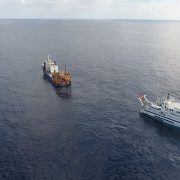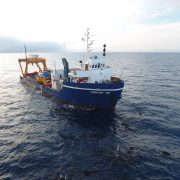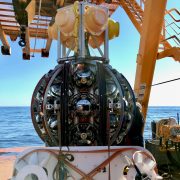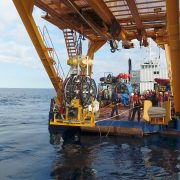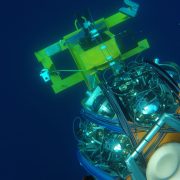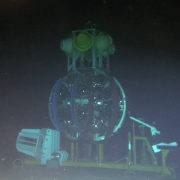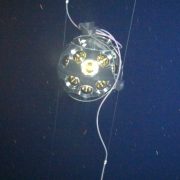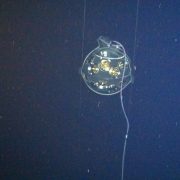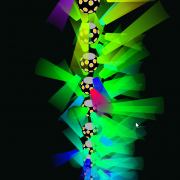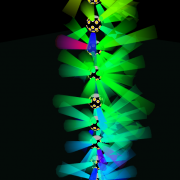 First detection unit of the KM3NeT/ORCA neutrino detector online
First detection unit of the KM3NeT/ORCA neutrino detector online
Last week, an extensive sea operation took place to deploy several elements of the KM3NeT/ORCA detector at the KM3NeT-Fr site, about 40 km offshore from Toulon. Amongst them, the first detection unit of ORCA comprising 18 optical modules, spaced at 9 m along a 200 m high vertical neutrino detection line. The deployment and connection of the detection unit was performed with the aid of a surface vessel and a Remotely Operated Vehicle (ROV) operated from a second boat.
The detection unit, wound around its spherical launching frame, was carefully lowered to the seafloor 2437 m below. Thanks to a state-of-the-art acoustic positioning system, the package was deployed within two metres of its designated position.
The detection unit, still on its frame, was connected to the seafloor network by the ROV establishing the electrical and optical connection with the shore station. Then, triggered by the ROV, the unfurling of the frame started, leaving behind the vertical detection line with the optical modules as it rotated back to the surface. After a visual inspection along the whole length of the line, the optical modules were powered on from the control room onshore.
At 22:20 on Friday 22 September 2017, the first ORCA detection unit came online with more than 500 photomultiplier tubes – the eyes of ORCA – providing high quality data. Twenty minutes later the first reconstructed cosmic ray muons were posted on the internal KM3NeT online logbook.
Watch the video in our YouTube Channel!
At the sea surface (credits CNRS Images):
In the deep sea (credits COMEX):
Reconstruction of the first events (copyright KM3NeT):

